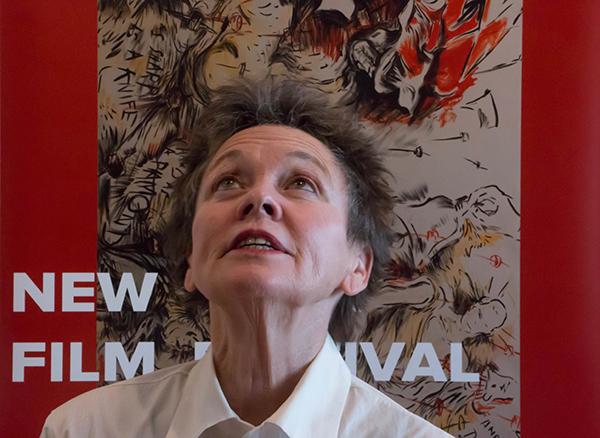Musician experiments with ‘Dog’

Laurie Anderson, a musician and performance artist, speaks about her upcoming film, Heart of a Dog.
October 25, 2015
Performance artist and musician Laurie Anderson has worked in many different artistic mediums throughout her career. She is perhaps most famous for her innovative work in electronic music, with her song “O, Superman” becoming a surprise hit and topping the 1981 Pazz and Jop singles poll. She has also won acclaim for her performance art and film. WSN sat down with Laurie Anderson about her latest film, “Heart of a Dog.”
WSN: You’ve worked in a lot of different media: music, film, performance art and gallery art. What do you find you are able to do best with film?
LA: I don’t look at work in terms of best and worst, I’m just trying to follow my instincts and see what comes out. Film is a little bit different from a record. A record you can make twelve songs that are maybe kind of unrelated. A film is better to have a bit of an engine in terms of story, rather than a collection of short stories. That doesn’t work so well in film, I think. Then again I’m not somebody who makes rules for what works and
what doesn’t.
WSN: Did you compose the music for the film after having shot it?
LA: Yeah. I showed the film to some people and they said, ‘Please don’t put music in. This is so hardcore. Just a voice. That’s so cool. Why mess it up with sentimental, manipulative music to tell you how to feel? People know how to feel; you don’t have to tell them how to feel.’ But in the end I put music because I’m a musician. That’s one reason to put it on. So I thought if I don’t like it I can always take it off.
WSN: The film talks a lot about Buddhism, especially Tibetan Buddhism. How long have you been interested in Buddhism?
LA: I started studying in the ‘70s, mostly Vipassana, which is a fairly new kind of Buddhism, about 500 years old. It’s based on storage of pain really, so that over time something bad happens, you don’t scream, you put it somewhere. Vipassana is about trying to find it through the body, not through language. Psychoanalysis tries to find your past through stories and language, through talking. Vipassana is much more about finding it through
physical sensations.
WSN: A lot of the critiques about the film talk about the opening of the film, which features footage of an actual operation on the heart of a dog. You once said that audiences try to categorize a work of art in the first few seconds, so you like to disorient audiences to stop this impulse. Was that your intention with the opening?
LA: It was for disorientation, and it is also the same opening to another film called “Heart of a Dog,” which also opens with an operation on a dog. It’s in Moscow, and there is this mad scientist who sees a dog on the street and tries to do a series of operations to turn it into a man. He’s a really good dog but an awful man, so it goes
very wrong.
A version of this article appeared in the Oct. 26 print edition. Email Tony Schwab at [email protected].











































































































































